Master Different Heat Settings on Your Gas Stove
Updated: 7 May 2024
548
Have you ever wondered why your pancakes come out too crispy or your soup takes forever to simmer? Selecting the right heat setting on your gas stove might be the trick you’re missing. Cooking is as much a science as it is an art, and the heart of this science often lies in how well you can manage the flame.
This post will explore the secrets behind the different heat settings on a gas stove and how mastering them can transform your cooking from good to great. “The only real stumbling block is fear of failure. In cooking, you’ve got to have a what-the-hell attitude,” Julia Child famously said. In this post, we’ll discuss the mechanics of gas stoves and provide practical tips for using low, medium, and high heat to your advantage.
(click here to know how to fix red flame on a gas stove)
From simmering delicate sauces to searing a steak perfectly, understanding your gas stove’s capabilities can significantly enhance your culinary creations. Whether you’re a novice looking to improve your skills or an experienced chef aiming for precision, this guide will help you achieve the results you desire.
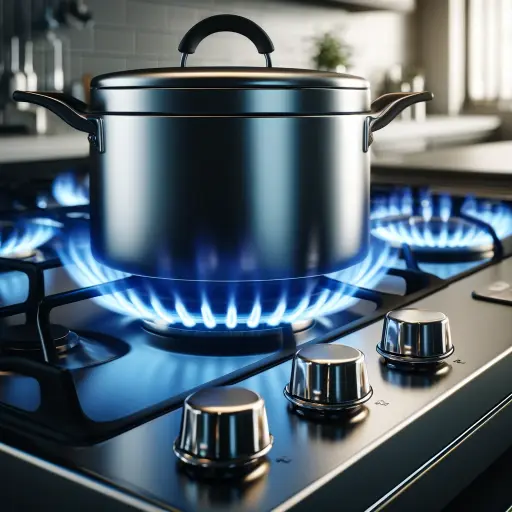
Understanding the Basics of a Gas Stove
Before diving into the specifics of heat settings, it’s crucial to grasp how a gas stove operates. A gas stove uses natural gas or propane, which is fed through a valve to mix with air, creating a combustible mixture. When you turn the knob, this mixture is ignited by a spark, producing a flame that can be adjusted by controlling the flow of gas.
To learn more about how to adjust the flame on a gas stove you can visit https://stovemastery.com/adjust-gas-stove-high-flame/
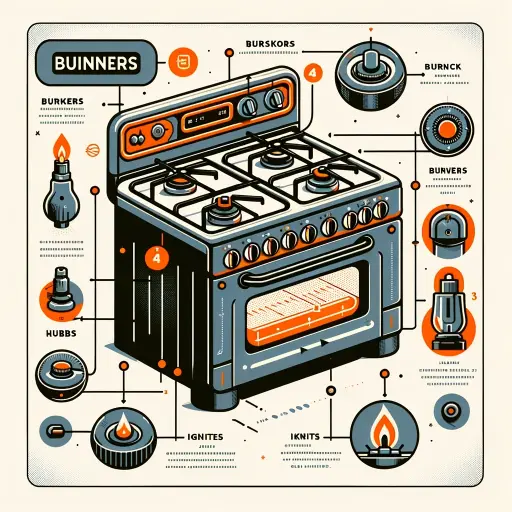
- Components of a Gas Stove:
- Burners: The primary heating elements where the flame is produced.
- Knobs: These control the intensity of the flame.
- Igniter: Generates the spark that starts the flame.
Understanding these components helps in mastering the heat control necessary for different cooking techniques. “Control is the key to straddling chaos,” as the chef, author, and teacher Samin Nosrat notes. This control starts with knowing your stove.
The Different Heat Settings
Navigating through the heat settings of a gas stove is essential for culinary success. Each setting serves a distinct purpose in cooking:
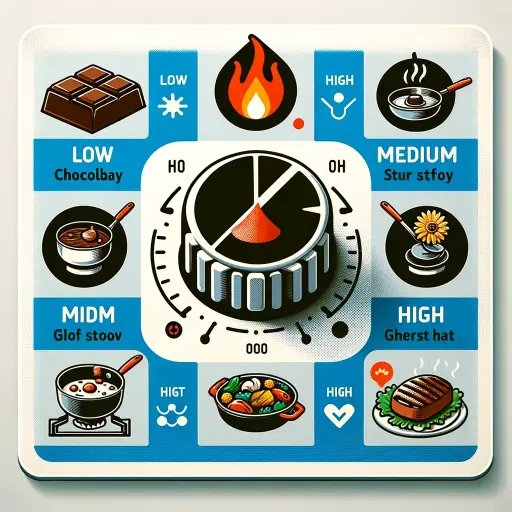
- Low Heat: Ideal for simmering sauces or melting chocolate without causing scorching.
- Medium Heat: Perfect for sautéing vegetables or cooking a piece of fish.
- High Heat: Necessary for searing meats or bringing water to a boil quickly.
Understanding these settings will enhance your dishes’ flavors and prevent common cooking errors, such as undercooking or burning. It’s about finding the right balance. As you experiment with these settings, you’ll begin to see how each dish can be optimized by adjusting the flame just right. This knowledge is what transforms a mundane task into a craft.
Tips for Using Low Heat
Mastering low heat on your gas stove can make a significant difference in dishes that require gentle cooking. It’s about nurturing the flavors without rushing them, allowing ingredients to meld harmoniously. Here are a few tips to ensure you use low heat effectively:

- Start Slow: Begin with a moderate flame and gradually turn it down to achieve a steady, low heat. This approach prevents sudden temperature changes that could ruin delicate ingredients.
- Use the Right Cookware: Opt for thick-bottomed pans that distribute heat evenly. Cast iron or heavy stainless steel works best to maintain a consistent temperature.
- Keep an Eye Out: Low heat cooking often requires patience and occasional stirring to ensure even cooking without sticking or burning.
These methods are essential for perfecting recipes like creamy risottos or delicate sauces. As chef Thomas Keller aptly puts it, “A recipe has no soul. You, as the cook, must bring soul to the recipe.” Using low heat correctly adds that soul by allowing ingredients to express their full potential slowly.
Mastering Medium Heat
Medium heat is arguably the most versatile and frequently used setting on a gas stove. It’s the go-to for everyday cooking, from frying eggs to grilling sandwiches. Here’s how to optimize medium heat for a variety of dishes:
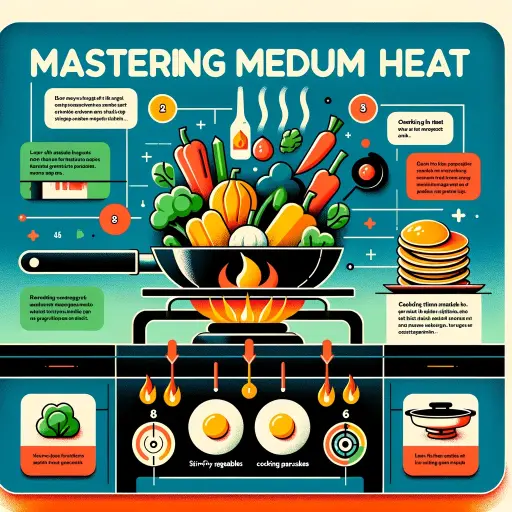
- Perfect for Sautéing: Medium heat provides enough warmth to cook food through without scorching the exterior. It’s ideal for vegetables, where you want to soften them while retaining their color and crunch.
- Control is Key: Adjust the flame to maintain a steady medium heat. If your pan starts smoking or ingredients begin to burn, it’s a sign to turn down the heat.
- Experiment: Use medium heat to find the sweet spot for cooking pancakes, where they develop a golden crust outside while staying fluffy inside.
Using medium heat effectively involves monitoring and adjusting, ensuring that every dish comes out as intended. It embodies the principle that cooking is an art of precision and adjustment, where heat control plays a crucial role in achieving culinary excellence.
High Heat Techniques
Using high heat effectively is crucial for techniques that require a quick response from your ingredients, such as searing meat or boiling water. Here’s how to harness the power of high heat on your gas stove:
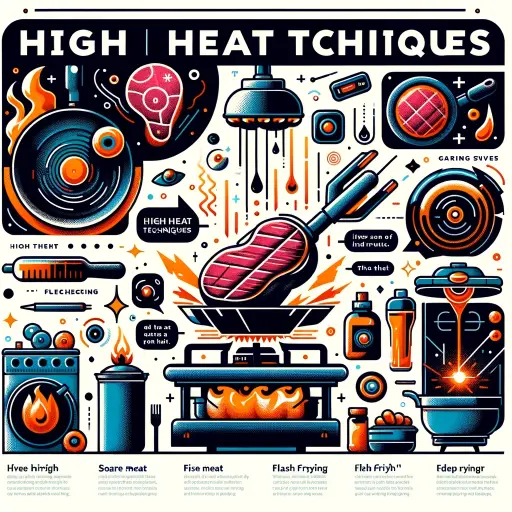
- Preheat Your Pan: Always allow your pan to heat up before adding oil or ingredients. This ensures an even cooking surface that’s ready to sear or fry at optimal temperatures.
- Avoid Overcrowding: When searing meat, give each piece enough space in the pan. Overcrowding can lower the temperature, causing meat to steam rather than sear.
- Stay Attentive: High heat means fast cooking. Stay focused on your cooking and be ready to turn down the heat or remove the pan from the burner to prevent burning.
“More than just cooking, I’m teaching them how to harness chemical reactions,” said culinary scientist Harold McGee. This approach to high heat cooking is not just about timing but understanding how heat changes the chemistry of food to enhance flavor and texture.
Comparing Dishes Across Different Heat Settings
Let’s delve into a comparative analysis to understand better how different heat settings on a gas stove affect various dishes. By looking at how low, medium, and high heat settings can be utilized, we can see their distinct impacts on cooking outcomes. Here’s a detailed comparison table that outlines typical dishes cooked on each setting and the results you can expect:
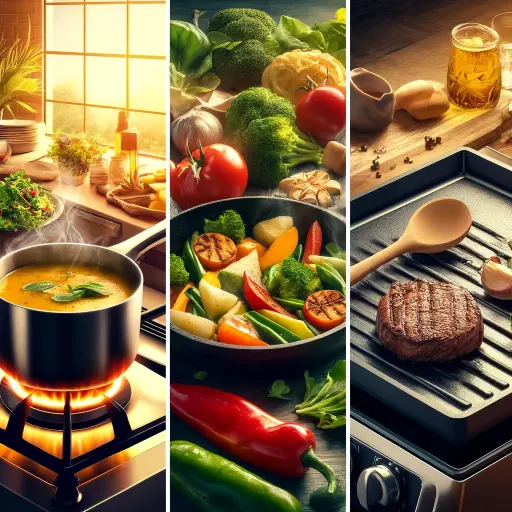
Quick Comparison
| Heat Setting | Dishes | Cooking Technique | Expected Outcome |
|---|---|---|---|
| Low Heat | Chocolate Melting | Melting | Smooth, evenly melted without scorching |
| Yogurt Making | Culturing | Gentle heat conducive to bacterial growth | |
| Rice Simmering | Simmering | Perfectly tender rice without sticking or burning | |
| Medium Heat | Vegetable Stir Fry | Sautéing | Crisp, brightly colored vegetables |
| Pancakes | Griddling | Golden brown surface with fluffy interior | |
| Bolognese Sauce | Simmering | Richly developed flavors, well-integrated | |
| High Heat | Steak Searing | Searing | Well-browned crust with juicy interior |
| Water for Pasta | Boiling | Rapid boiling, ideal for quick cooking | |
| Stir-Fried Shrimp | Stir-frying | Quick cook with a slight char and tender meat |
Analysis
- Low Heat: Essential for dishes requiring delicate treatment or gradual heat increase. It’s perfect for foods that are prone to burning or need slow heat for proper development.
- Medium Heat: The go-to setting for everyday cooking. It provides enough heat to cook thoroughly without overpowering, making it ideal for a wide range of dishes.
- High Heat: Best used when you need to cook something quickly or achieve a crispy, browned exterior. It’s excellent for locking in flavors through rapid cooking.
Understanding these differences can significantly enhance your cooking repertoire, allowing you to choose the best heat setting for your culinary needs. Whether you’re slowly simmering a sauce to build depth of flavor or quickly searing meat to retain its juiciness, selecting the right heat setting is key to achieving the desired dish quality.
Safety Precautions When Handling Heat Levels on A Gas Stoves
While mastering the different heat settings on your gas stove can elevate your cooking, ensuring safety is paramount. Here are key safety tips to remember:
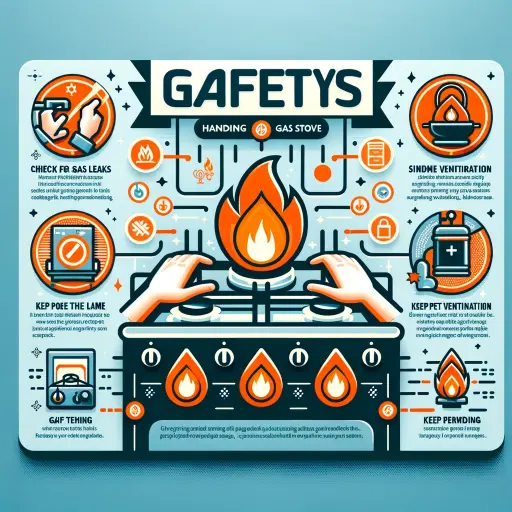
- Check for Gas Leaks: Always sniff for a sulfur-like smell around your stove, which could indicate a gas leak. If you suspect a leak, turn off your stove and open windows before investigating further.
- Proper Ventilation: Use an extractor fan or open a window to keep the kitchen well-ventilated, especially when using high heat.
- Flame Visibility: Never leave your stove unattended when in use. Always make sure you can see the flame; if it goes out, turn off the burner immediately to prevent gas build-up.
Following these safety measures can prevent accidents and ensure a safe cooking environment. “Knowledge is the key to safety,” emphasizes the importance of being informed and prepared when using any heat setting on your gas stove.
Click here to learn what causes a gas stove to explode.
Conclusion
Mastering the different heat settings on your gas stove is not just about following recipes—it’s about gaining control and confidence in your cooking. Each setting, from low to high, serves a unique purpose that can elevate your culinary creations. Here’s a quick recap of what we’ve covered:
- Low Heat: Ideal for gentle cooking processes like simmering and melting, perfect for enhancing flavors without risk of burning.
- Medium Heat: The all-rounder setting suitable for sautéing, frying, and cooking dishes evenly.
- High Heat: Best used for searing meats and boiling liquids, providing the intense heat needed for quick cooking and flavor enhancement.
By understanding and utilizing these settings effectively, you can transform your approach to cooking, making every meal a testament to your skills. “The discovery of a new dish does more for the happiness of mankind than the discovery of a star,” remarked Brillat-Savarin, emphasizing the joy and satisfaction that cooking brings into our lives. Embrace these settings as tools of creativity in your kitchen, and continue to experiment, learn, and enjoy the art of cooking.
Please Write Your Comments